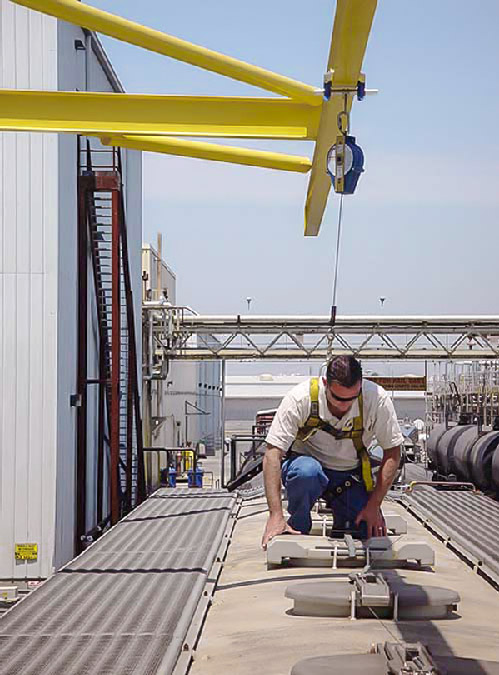
Bulk railcar chemical loading is a process that involves potential hazards, including falls from heights. This article highlights the importance of fall protection equipment, such as harnesses, lanyards, self-retracting lifelines, anchor points, and guardrails, in ensuring the safety of workers during these operations.
Harnesses: Securing Workers during Chemical Loading Operations
Wearing harnesses during bulk railcar chemical loading helps protect workers from falls by distributing the impact of a fall across the body. Selecting comfortable, adjustable harnesses ensures proper fit and enhances worker safety during the loading process.
Lanyards: Maintaining Worker Stability During Chemical Loading:
Lanyards connect a worker’s harness to an anchor point or self-retracting lifeline, providing stability and preventing falls during chemical loading operations. Opt for shock-absorbing lanyards to minimize the impact of sudden stops and reduce the risk of injury.

Self-Retracting Lifelines: Offering Mobility and Safety during loading
Self-retracting lifelines extend and retract as workers move around the loading area, allowing freedom of movement while maintaining a secure connection. By locking in the event of a fall, SRLs prevent workers from falling further and enhance safety during railcar chemical loading.

Anchor Points: Providing a Secure Attachment for Fall Protection Equipment
Anchor points support the weight of a worker during a fall arrest, ensuring their safety during bulk railcar chemical loading operations. Regularly inspect anchor points to guarantee their strength and reliability, contributing to a safer work environment.

Guardrails: Creating a Barrier to Prevent Falls during Chemical Loading
Guardrails provide passive fall protection by creating a physical barrier around elevated work areas, preventing workers from accidentally falling during bulk railcar chemical loading. Durable, high-quality guardrails help maintain safety and reduce the risk of falls.








